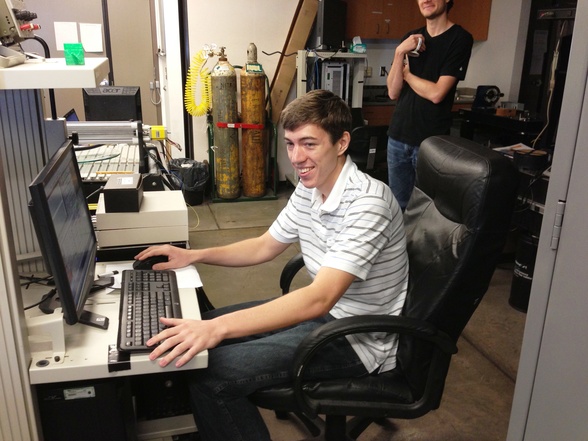Home Island: Maui
High School: Parker School
Institute when accepted: University of Miami in Florida
Project Title: Development of an Automated Robotic Laser-Tracker System for Performing Mirror Surface Metrology
Project Site: Institute for Astronomy, Maui
Mentors: Joe Ritter, Jeff Kuhn
Telescope mirrors are continually getting thinner as advancements in active optics allow mirrors to maintain their shape even with larger mirror diameters. With larger diameter mirrors, the telescopes can take in more light allowing for higher resolution imagery of fainter and more distant objects. However, experimental thin mirrors are more likely to sag and distort and thus there is an increased need to verify that the mirrors meet the proper surface specifications. With this need, the surface figure of the mirrors must be accurately mapped. This project focused on designing, assembling, and testing an autonomous machine and process that can accurately map the surface of a small mirror. The tools used to complete this task were a laser tracker and a CNC router. Over the course of the project, a CNC router was converted to mount a corner cube, which acts as a reflector for a laser tracker. In order to implement this mount, it had to be properly designed and fabricated. The CNC machine, capable of movement within a defined x-y-z range, is able to maneuver the corner cube along the surface of the mirror as the tracker takes positional data points. With these data points, the laser tracker software can then fit the points to a three dimensional shape, such as a paraboloid, and quantify errors from the ideal shape. This project not only involved the design and assembly of the machine, whether it be machining or wiring, but also creating a program to complete the mirror scan. This program required coding for motors to move the mount, sensors to locate the mirror’s surface height and edges, switches to detect contact with the mirror, and the laser tracker to take readings at the proper intervals. All of the involved components, CNC machine motors, sensors, switches, laser tracker, and three independent computers, needed to be programmed to work in unison to complete the task. Overall, this design could also be implemented in larger models, utilizing larger stages which would be able to map much larger telescope mirrors, like the Institute for Astronomy’s two meter PLANETS telescope.
